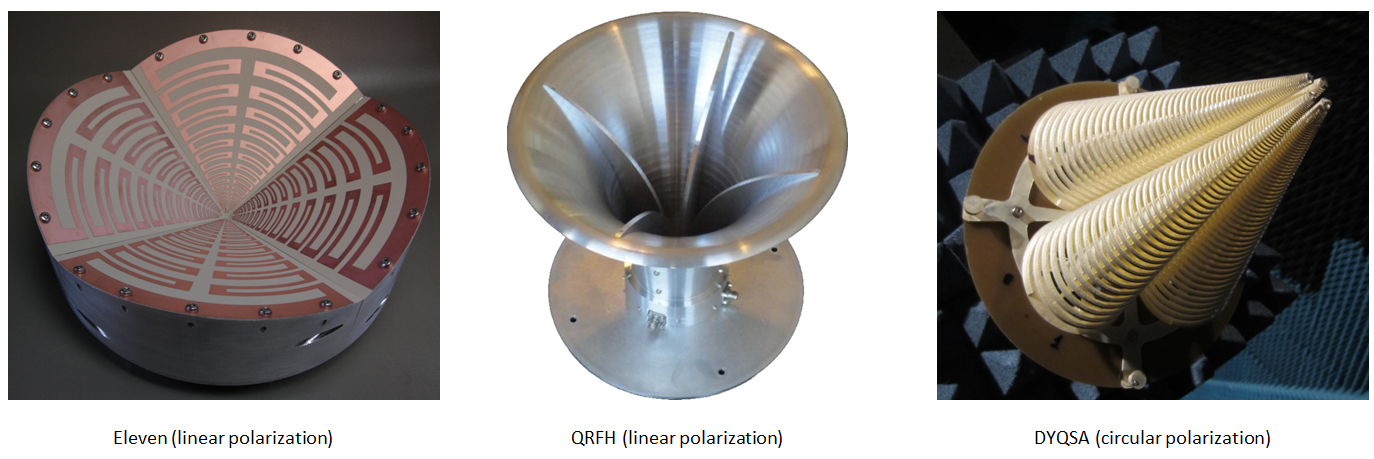There are currently two feeds solutions which meet the specifications of the project but with some lacks to be fulfilled. The two solutions are: the Eleven Feed developed at Chalmers University and the Quadruple Ridged Flared Horn (QRFH) developed at the California Institute of Technology. Both solutions have some deficiencies for achieving the electromagnetic requirements of the VGOS project such as the stability of the radiation pattern and the high efficiency required, both through the whole frequency band.


The efficiencies of Eleven feed and QRFH are calculated using GRASP software at Onsala observatory and physical optics software at JPL respectively. DYQSA efficiency is calculated using two methods: following [1] in solid blue line and using GRASP in the dotted blue line. This comparison validates the frequency independent efficiency of DYQSA, and in the other hand the exponential decrement in the efficiencies for the other two solutions in high frequencies. So our proposed solution shows better performance in the higher frequencies range. Also it is plotted the DYQSA efficiency with an offset displacement of 10 mm far from the optimum point, showing a significantly decrement in the efficiencies values beyond 10 GHz. It can be seen that the decrement in the efficiency at higher frequencies follows the same slope as Eleven and QRFH, which could be interpreted as the phase efficiency error existing in these solutions. DYQSA solution shows a planar efficiency behavior in the whole band.
[1] P. S. Kildal, “Factorization of the feed efficiency of paraboloids and cassegrain antenna”, IEEE Trans. On Antennas and Propagation, Vol. AP-33, No. 8, pp. 903 – 908, August 1985.
